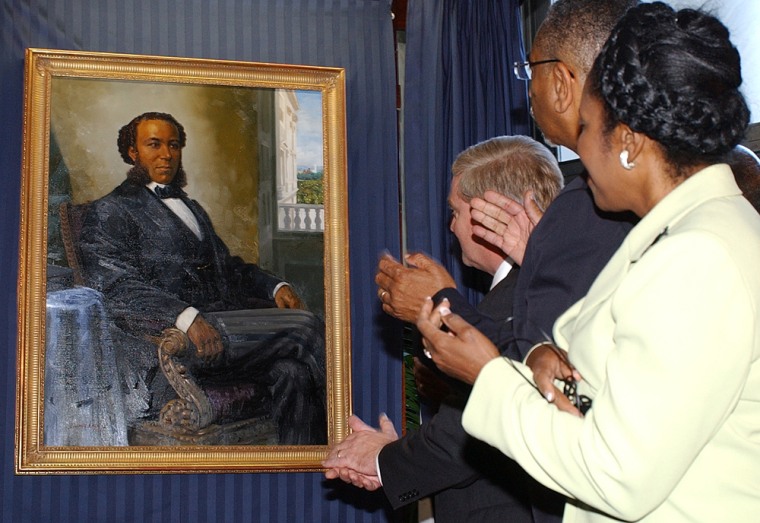In 1870 Joseph Rainey became the first black person elected to the House of Representatives. On Wednesday he became the first to have his portrait hung in the House.
The oil painting of the South Carolina congressman was unveiled before members of the Congressional Black Caucus, the Rev. Jesse Jackson and family descendants.
Rainey’s painting, said Rep. Chaka Fattah, D-Pa., corrects a situation where there are “hundreds of portraits on the House side and not one reflects a person of color.”
Rainey, born into slavery in 1832, served in the House during the Reconstruction Era period of 1870 to 1879, when he worked to advance the civil rights of newly freed slaves.
The portrait project was led by Fattah and Rep. Bob Ney, R-Ohio, chairman of the House Fine Arts Board, as part of efforts to better represent women and minorities among the more than 300 portraits in the Capitol complex. The artist was Simmie Knox, who also did the official White House portraits of President Clinton and then-first lady Hillary Rodham Clinton.
Rainey was one of a small number of black people elected to seats representing parts of the former Confederacy after the Civil War. There were no blacks in Congress for the three-decade period before 1929, and as late as 1963 there were only three. Currently there are 42 black representatives in the 435-member House, and one black senator.
The Senate in 2002 dedicated a portrait of Blanche Bruce of Mississippi, the first black to serve a full term in the Senate, from 1875 to 1881.
The House on Wednesday also approved a request by the state of New Mexico to place in the Capitol a statue of Po’Pay, a Pueblo Indian who led a revolt against the Spanish in 1680. It is to be unveiled Thursday.
Each state is permitted to display statues of two eminent personages in the Capitol. New Mexico, which has a statue honoring Dennis Chavez, the first American-born Hispanic senator, has been the only state not to have two statues.
